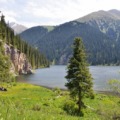Australia, the world’s sixth-largest country, is an enchanting land that captivates with its diverse landscapes, vibrant culture, and unique wildlife. Boasting stunning natural wonders like the Great Barrier Reef, the vast Outback, and ancient rainforests, Australia offers a rich tapestry of experiences. Its bustling cities, including Sydney with its iconic Opera House and Harbour Bridge, Melbourne renowned for its arts and culture, and the laid-back charm of Brisbane and Perth, showcase a blend of modernity and heritage. The country’s indigenous roots add depth to its identity, celebrating a rich history spanning over 65,000 years, while its friendly locals, affectionately known as “Aussies,” embrace a relaxed lifestyle, love for outdoor adventures, and a passion for sports like cricket, rugby, and surfing. Australia’s commitment to conservation, multiculturalism, and innovation further solidifies its position as a globally cherished destination offering endless exploration and warmth.
Sydney, New South Wales
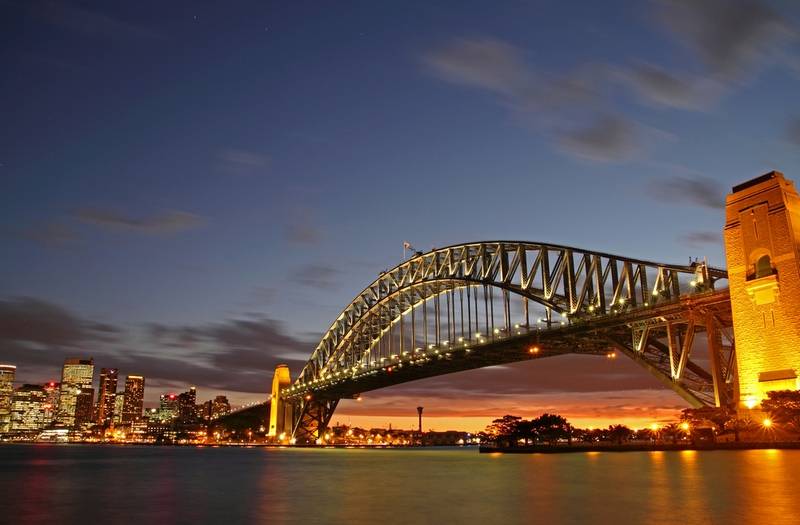 The Sydney Harbour Bridge. aiyoshi/shutterstock |
Sydney, Australia’s dazzling harbor city, is a captivating fusion of urban vibrancy and natural splendor. The iconic Sydney Opera House and the Sydney Harbour Bridge define its skyline, drawing millions of visitors annually. Nestled nearby is the world-renowned Bondi Beach, a quintessential Australian destination celebrated for its golden sands, azure waters, and vibrant surf culture. Bondi exudes a laid-back charm, offering an array of activities from sunbathing and surfing to coastal walks along the scenic Bondi to Coogee trail. Beyond the city bustle, the breathtaking Blue Mountains, a short drive from Sydney, unveil a haven of majestic cliffs, eucalyptus forests, and cascading waterfalls. Visitors revel in its natural beauty, exploring hiking trails, encountering the iconic Three Sisters rock formation, and relishing panoramic vistas from vantage points like Echo Point.
Sydney’s allure lies not only in its iconic landmarks but also in its seamless blend of cosmopolitan life and natural wonders. The city’s energetic ambiance is complemented by its cultural richness, seen in its diverse culinary scene, world-class museums, and vibrant neighborhoods like The Rocks, steeped in history.
Uluru-Kata Tjuta National Park, Northern Territory
 Uluru, the largest monolith in the world. stanislav-fosenbauer/shutterstock |
Uluru, also known as Ayers Rock, stands as one of Australia’s most iconic natural landmarks, a colossal sandstone monolith steeped in spiritual significance for Indigenous Australians. Rising majestically from the Red Centre of the country, Uluru’s sheer size and striking red hues captivate visitors at sunrise and sunset, when the rock undergoes a breathtaking color transformation. Adjacent to Uluru lies Kata Tjuta, also known as the Olgas, a series of 36 dome-shaped rock formations, each possessing its own distinctive character.
Kings Canyon, Northern Territory
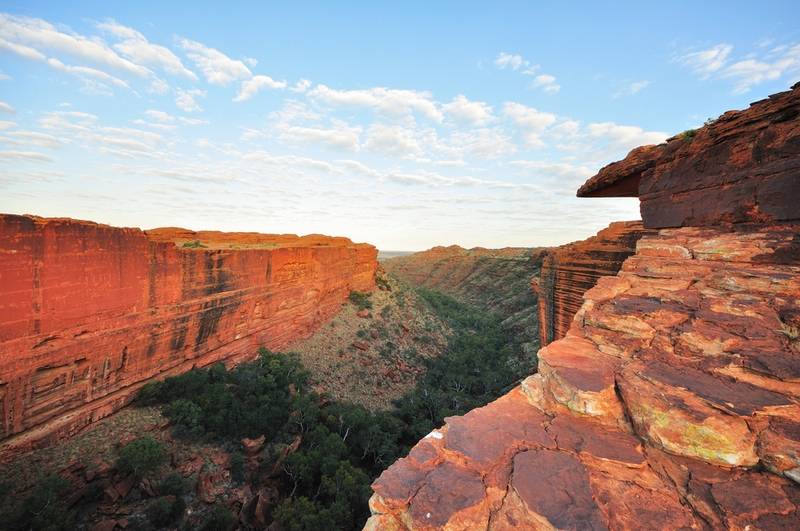
Kings Canyon. jimmyboy/shutterstock
Kings Canyon, a stunning natural marvel located in Watarrka National Park within Australia’s Northern Territory, offers a breathtaking landscape adorned with rugged cliffs, ancient sandstone walls, and a lush oasis known as the Garden of Eden. To visit this remarkable canyon, travelers often embark on a day trip from either Alice Springs or Ayers Rock (Uluru), both accessible by road. The canyon boasts two main walking trails: the challenging but rewarding Rim Walk, providing awe-inspiring panoramic views from the canyon’s edge, and the easier Kings Creek Walk, ideal for those seeking a more relaxed exploration. Visitors are advised to take plenty of water, wear sturdy walking shoes, and plan their visit during cooler times of the day due to the arid desert climate.
Moreton Island, Sunshine Coast, Queensland
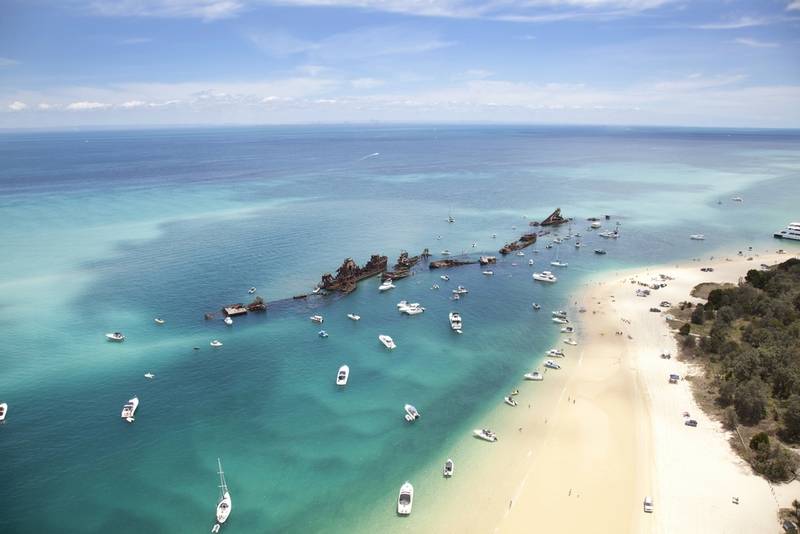
Artificial reef on Moreton Island, the third largest sand island in the world. mark-higgins/shutterstock
Moreton Island, an idyllic natural gem located off the coast of southeast Queensland, beckons adventurers with its pristine beaches, crystal-clear waters, and diverse ecosystems. Accessible via a ferry ride from Brisbane, this island paradise offers an array of activities for nature enthusiasts and thrill-seekers alike. Visitors can explore the famous Tangalooma Wrecks, a snorkeler’s paradise where a series of sunken ships create a haven for marine life, or indulge in sandboarding along the island’s enormous sand dunes. Moreton Island boasts rich wildlife, including dolphins, turtles, and a variety of bird species, making it a haven for nature lovers.
Noosa, Sunshine Coast, Queensland
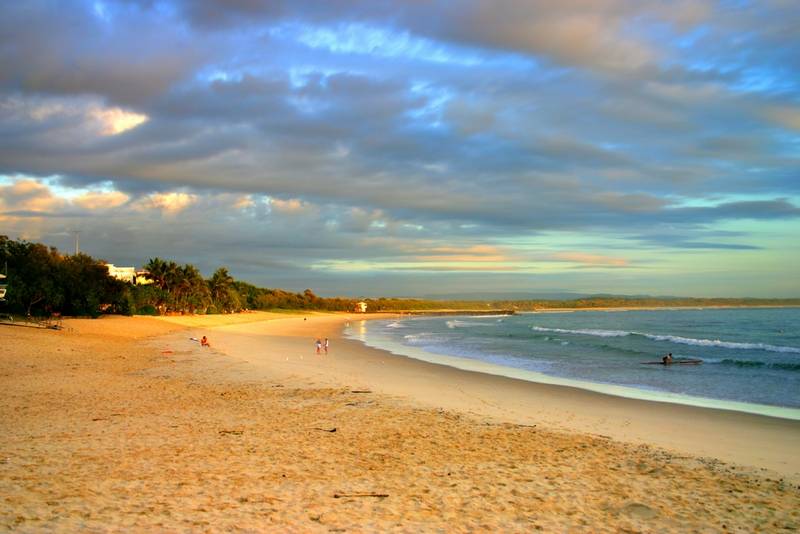
Noosa, a popular cosmopolitan beach town north of Brisbane. col/shutterstock
Noosa, nestled along the Sunshine Coast in Queensland, epitomizes coastal charm and natural beauty, luring visitors with its pristine beaches, lush national parks, and cosmopolitan vibe. Known for its laid-back atmosphere and a blend of upscale boutiques, fine dining, and relaxed cafes, Noosa effortlessly combines sophistication with a relaxed beach town ambiance. Its main beach, with its golden sands and turquoise waters, attracts surfers, sunbathers, and families seeking a leisurely seaside escape. Noosa National Park, situated at the edge of town, offers picturesque coastal trails where visitors can spot koalas, dolphins, and diverse birdlife while relishing breathtaking views of the Pacific Ocean. The vibrant Hastings Street buzzes with activity, offering a diverse array of dining options, boutique shopping, and art galleries.
Hervey Bay, Sunshine Coast, Queensland
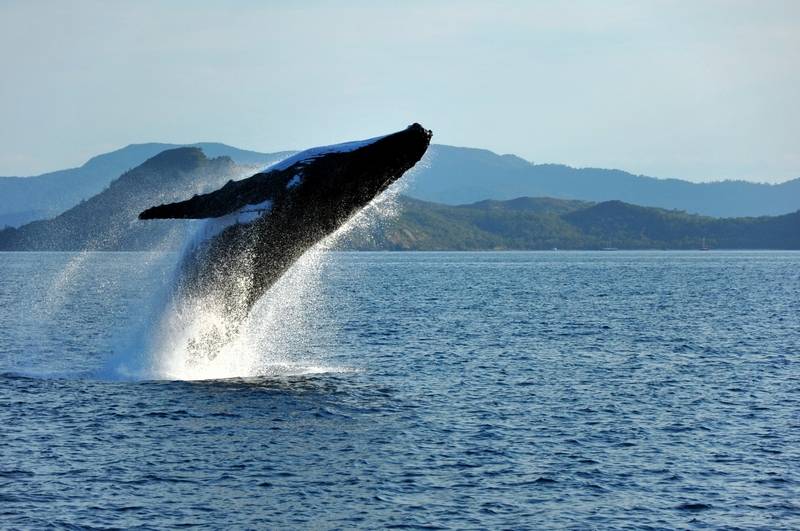
Hervey Bay, one of the best destinations in Australia for seeing humback whales which visit from August to November. dmitriy-komarov/shutterstock
Hervey Bay, located on the Fraser Coast in Queensland, is renowned as the gateway to the World Heritage-listed Fraser Island and celebrated for its unparalleled whale-watching experiences. Each year from July to November, humpback whales migrate through these warm waters, making Hervey Bay a prime destination for up-close encounters with these magnificent creatures. Visitors embark on thrilling whale-watching tours, often aboard purpose-built vessels, providing an opportunity to witness these colossal mammals breaching, tail-slapping, and playing in their natural habitat. Beyond its whale-watching fame, Hervey Bay boasts a charming seaside atmosphere with a scenic esplanade lined with cafes, parks, and a vibrant marina. The town’s relaxed vibe, coupled with its stunning coastal views and accessibility to Fraser Island, makes Hervey Bay an alluring destination for nature enthusiasts and those seeking an unforgettable marine wildlife experience.
Fraser Island, Sunshine Coast, Queensland
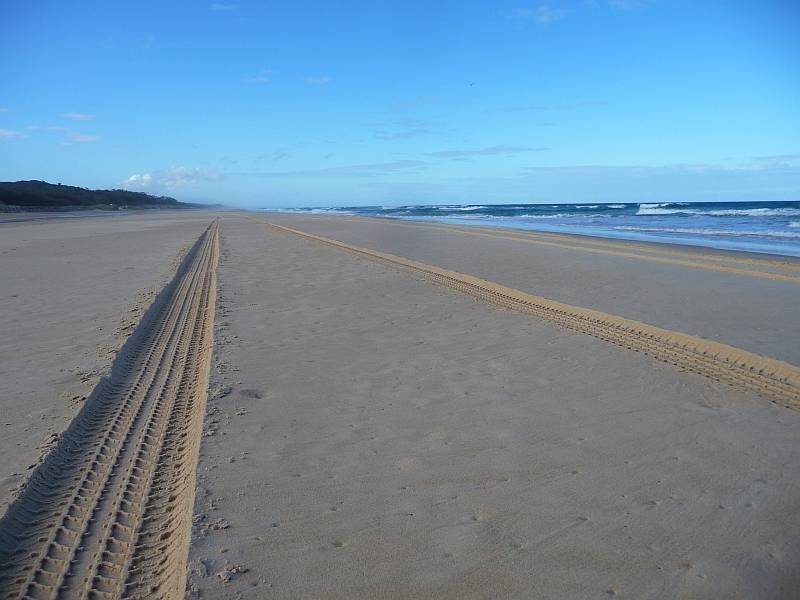 The beach highway on Fraser Island, the largest sand island in the world. |
Fraser Island, the largest sand island globally and a UNESCO World Heritage Site, stands as a natural wonder off the coast of Queensland, Australia. Accessible via ferries departing from Hervey Bay or Rainbow Beach, this island paradise captivates visitors with its diverse landscapes, including pristine beaches, lush rainforests, crystal-clear freshwater lakes, and striking sand dunes. Travelers can explore the island’s wonders by joining guided tours or self-driving in 4WD vehicles along designated tracks, allowing them to discover highlights such as the stunning Lake McKenzie, the colored sands of The Pinnacles, the Maheno Shipwreck, and the tranquil waters of Eli Creek.
The Kimberleys, Western Australia
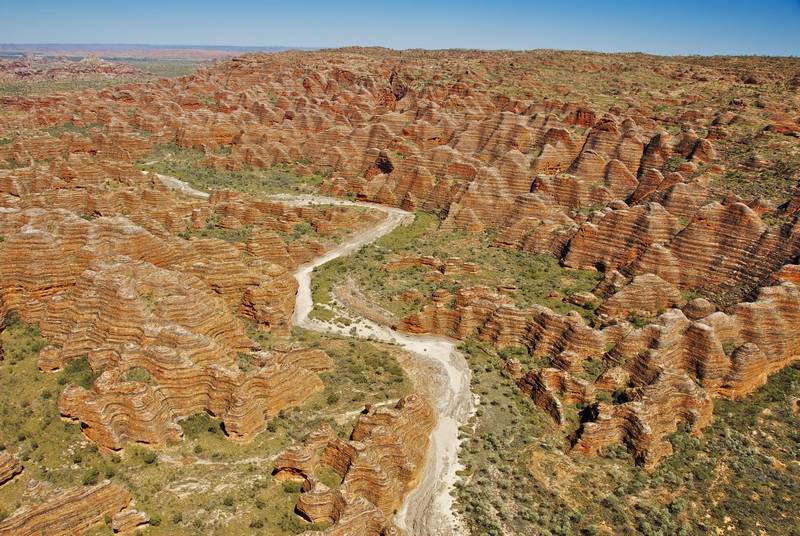 Bungle Bungles Range in Purnululu National Park. simon-krzic/shutterstock |
The Kimberley region in Western Australia stands as an awe-inspiring and rugged expanse, renowned for its dramatic landscapes, ancient Aboriginal culture, and natural wonders. The Gibb River Road, a 4WD track stretching over 600 kilometers, serves as a gateway to this remote and breathtaking area. This route traverses stunning gorges, cascading waterfalls, and red-rock landscapes, providing access to some of the Kimberley’s most spectacular attractions. Broome, a coastal town steeped in history and known for its pearling industry, sits on the edge of the Kimberley and offers a unique blend of stunning beaches, rich Indigenous heritage, and the mesmerizing natural phenomenon of the Staircase to the Moon. Windjana Gorge and Tunnel Creek showcase ancient geological formations and Aboriginal history, while the otherworldly Wolf Creek Meteor Crater, a significant impact site, fascinates visitors with its sheer size and extraordinary history.
Further inland lie the iconic Bungle Bungle Range, an UNESCO World Heritage Site famed for its beehive-shaped domes streaked with orange and black stripes, offering an otherworldly landscape to explore. Mitchell Falls captivate with their multi-tiered cascades set amidst the rugged wilderness, accessible through challenging hiking trails or via helicopter, providing an unforgettable view of these remote and majestic falls.
The Great Barrier Reef, Far North Queensland
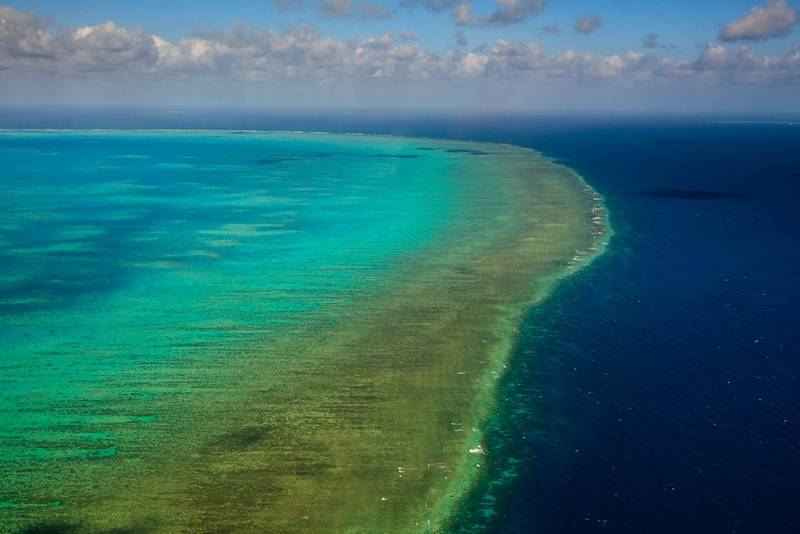 The Great Barrier Reef, the worlds largest reef system. It stretches more than 2600 km. pete-niesen/ahutterstock |
The Great Barrier Reef, a UNESCO World Heritage Site, stands as one of the world’s most magnificent natural wonders, stretching over 2,300 kilometers along the coast of Queensland, Australia. Cairns serves as a bustling gateway to this marine marvel, offering various ways to experience the reef’s unparalleled beauty. Visitors can embark on reef tours departing from Cairns, ranging from snorkeling and diving adventures to scenic cruises and glass-bottom boat tours, providing glimpses into the reef’s vibrant underwater world teeming with colorful coral gardens, diverse marine life, and mesmerizing aquatic landscapes.
Cairns, Far North Queensland
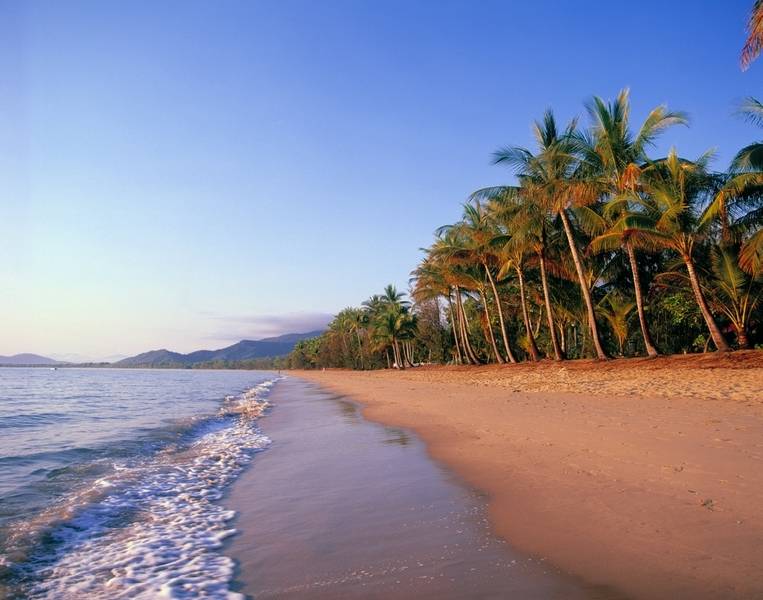
Palm Cove near Cairns. Cairns is the fourth most visited city in Australia and is a popular departure point to the Great Barrier Reef. janelle-lugge/shutterstock
Known for its lush rainforests, Cairns offers easy access to the breathtaking Great Barrier Reef, where visitors can embark on snorkeling, diving, and reef tours to explore the kaleidoscopic underwater world. The city itself boasts a lively esplanade dotted with restaurants, bars, and a swimming lagoon, offering a perfect spot for relaxation and entertainment. The city exudes a lively atmosphere with its bustling markets, where local artisans showcase their crafts, and its proximity to the ancient Daintree Rainforest and Atherton Tablelands, making Cairns a bustling hub for nature lovers and adventure seekers looking to delve into the region’s diverse landscapes and vibrant culture.
Cape Tribulation, Far North Queensland

Fan Palm at Cape Tribulation, a small settlement 3 hours north of Cairns. It is a popular eco tourist destination. silken-photography/shutterstock
Cape Tribulation, located in the heart of the Daintree Rainforest in Tropical North Queensland, stands as a captivating destination where ancient rainforest meets pristine coastline. Renowned for its natural beauty and ecological significance, this remote area offers a unique blend of lush, World Heritage-listed rainforest meeting white sandy beaches and the turquoise waters of the Coral Sea. Visitors to Cape Tribulation have the opportunity to explore the wonders of the Daintree, with its rich biodiversity, rare flora and fauna, and diverse ecosystems, often through guided walks, jungle surfing, or river cruises.
The Whitsundays, Far North Queensland

Whitehaven beach in the Whitsunday Islands, one of the most popular yachting destinations in the Southern Hemisphere. taras-vyshnya/shutterstock
The Whitsunday Islands, a breathtaking collection of 74 pristine islands off the coast of Queensland, Australia, epitomize tropical paradise. Among its standout jewels lies Whitehaven Beach, a globally acclaimed stretch of pure silica sand and crystalline waters. With its dazzling white sands that stretch over seven kilometers along Whitsunday Island, Whitehaven Beach stands as an icon of natural beauty, offering an idyllic setting for relaxation and exploration. Visitors can access this slice of paradise through boat tours departing from Airlie Beach, Hamilton Island, or Daydream Island.
Wilson’s Promontory, Victoria
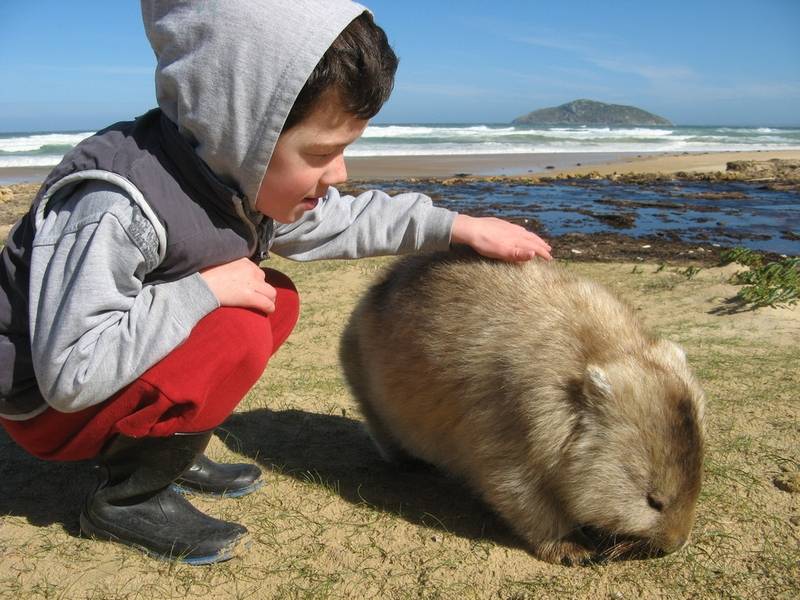
Wombat at Wilson’s Promontory, the southernmost point of mainland Australia. robyn-butler/shutterstock
Wilson’s Promontory, affectionately known as “The Prom,” is a pristine national park situated at the southernmost tip of mainland Australia, offering a diverse tapestry of rugged coastlines, granite mountains, sweeping beaches, and lush forests. This cherished natural haven, easily accessible from Melbourne, beckons outdoor enthusiasts and nature lovers alike. Its extensive network of hiking trails leads adventurers through varied landscapes, showcasing panoramic vistas from summits like Mount Oberon, serene coastal walks along Squeaky Beach and Whisky Bay, and the chance to encounter native wildlife, including wombats, kangaroos, and emus.
Byron Bay, New South Wales
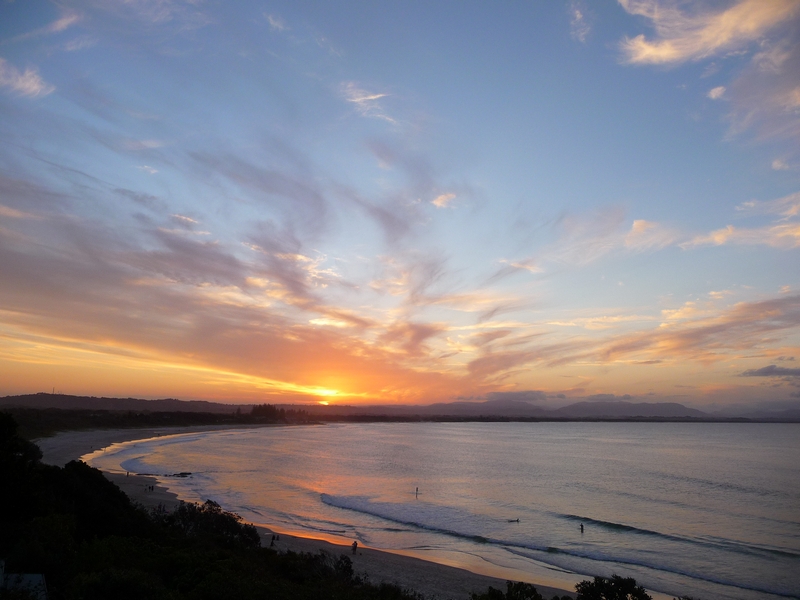
View over the main beach of Byron Bay, a mecca for surfers, backpackers and hippies.
Byron Bay, a coastal town nestled in northern New South Wales, embodies a unique blend of bohemian charm, stunning beaches, and a laid-back atmosphere. Renowned for its alternative culture, surf-friendly waves, and vibrant community, Byron Bay allures visitors with its picturesque coastline, including the iconic Cape Byron Lighthouse perched atop the easternmost point of Australia. Byron Bay is also a spiritual hub, with wellness retreats, yoga studios, and a holistic lifestyle that contributes to its relaxed ambiance.
Coober Pedy, South Australia
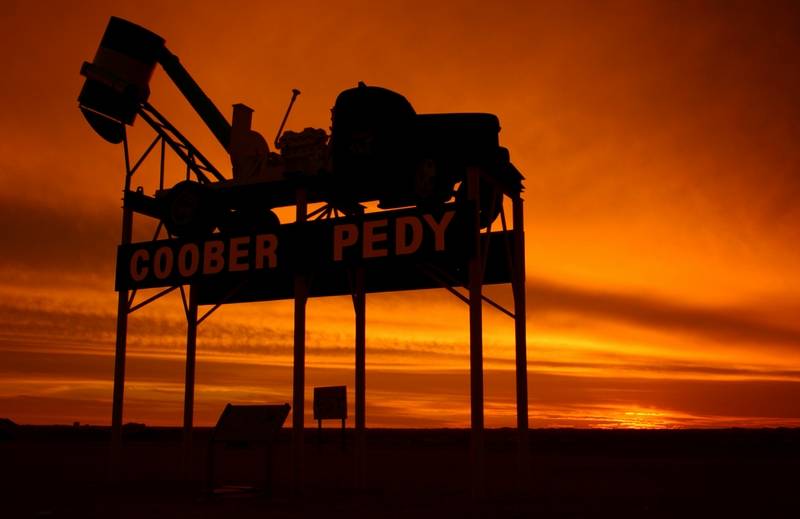
Digging machine in Coober Pedy, an opal mining town in a desolate part of central Australia. The summers here are so harsh that many residents live underground. joern/shutterstock
Coober Pedy, a unique and otherworldly town situated in the arid landscapes of South Australia, is renowned globally as the “Opal Capital of the World.” The town’s scorching temperatures have led residents to construct underground homes known as “dugouts” to escape the extreme heat, making it an intriguing destination where visitors can explore underground churches, hotels, and even an underground bar.
Melbourne, Victoria
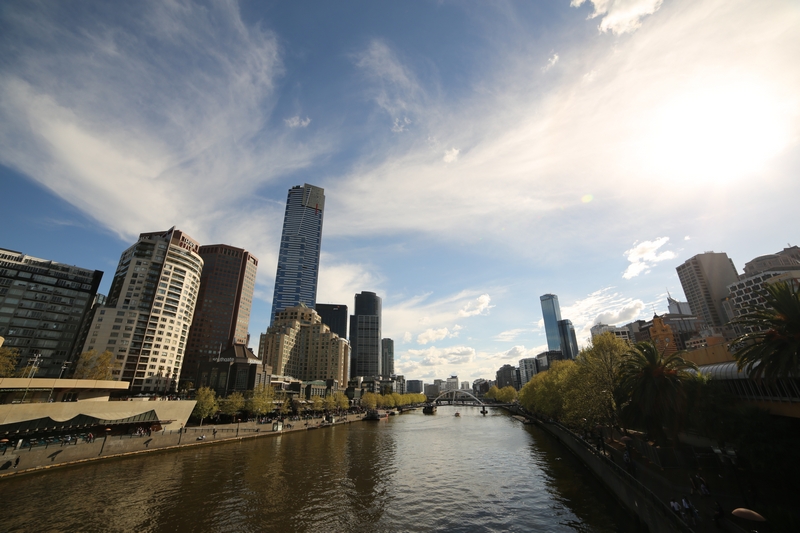
View along the Yarra River in Melbourne, a metropolis crowned the ‘worlds most livable city’ three years in a row.
Melbourne, the cosmopolitan capital of Victoria, stands as a vibrant and diverse cultural hub renowned for its arts, culinary delights, sporting fervor, and Victorian-era architecture. The city has a myriad of laneways adorned with street art, bustling markets like Queen Victoria Market, and a thriving culinary scene spanning international cuisines. Known as Australia’s sporting capital, Melbourne hosts iconic events such as the Australian Open Tennis Grand Slam and the Melbourne Cup horse race, adding to its allure. The city’s love for the arts shines through its numerous galleries, theaters, and cultural precincts like Federation Square, while its beautiful parks, including the Royal Botanic Gardens, offer serene retreats amidst the urban bustle.
The Great Ocean Road, Victoria
 |
The Great Ocean Road, an iconic Australian coastal drive, winds along Victoria’s stunning southwestern coastline, unveiling breathtaking vistas, rugged cliffs, and natural wonders. Stretching over 240 kilometers, this scenic route offers a mesmerizing journey through diverse landscapes, passing by iconic landmarks like the Twelve Apostles, limestone stacks rising majestically from the Southern Ocean, as well as the London Arch and Loch Ard Gorge. Encompassing charming seaside towns such as Lorne and Apollo Bay, the road trip offers opportunities for beachside relaxation, wildlife encounters, and outdoor adventures like surfing or hiking in the Great Otway National Park.
Perth, Western Australia
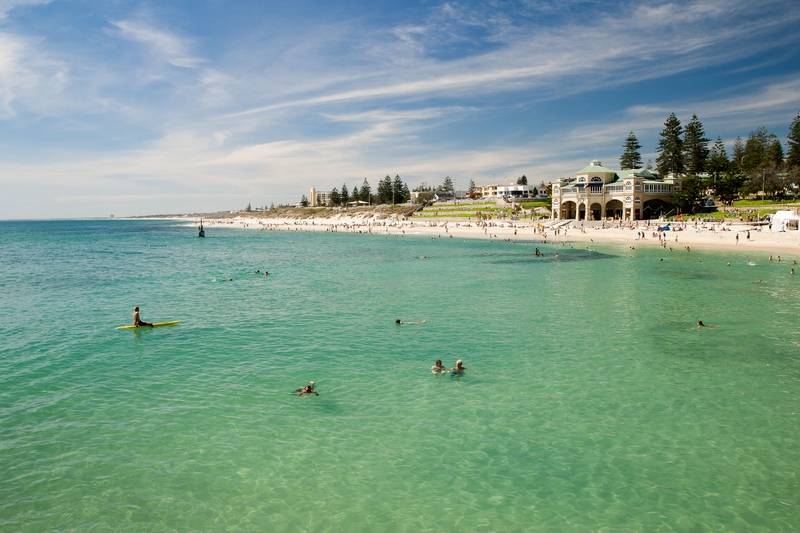
Cottesloe beach. janelle-lugge/shutterstock
Perth, the vibrant capital city of Western Australia, is a sun-soaked metropolis renowned for its laid-back lifestyle, stunning landscapes, and thriving arts and culinary scene. Situated along the sparkling Swan River and overlooking the Indian Ocean, Perth offers a unique blend of urban sophistication and natural beauty. The city boasts a plethora of cultural attractions, from the contemporary architecture of Elizabeth Quay to the historic charm of Fremantle, with its bustling markets and maritime heritage. Kings Park and Botanic Garden, one of the world’s largest inner-city parks, provides breathtaking views of the skyline while showcasing native flora. Perth’s pristine beaches, including Cottesloe and Scarborough, draw locals and visitors alike for swimming, surfing, and sunbathing.
Ningaloo Reef, Western Australia
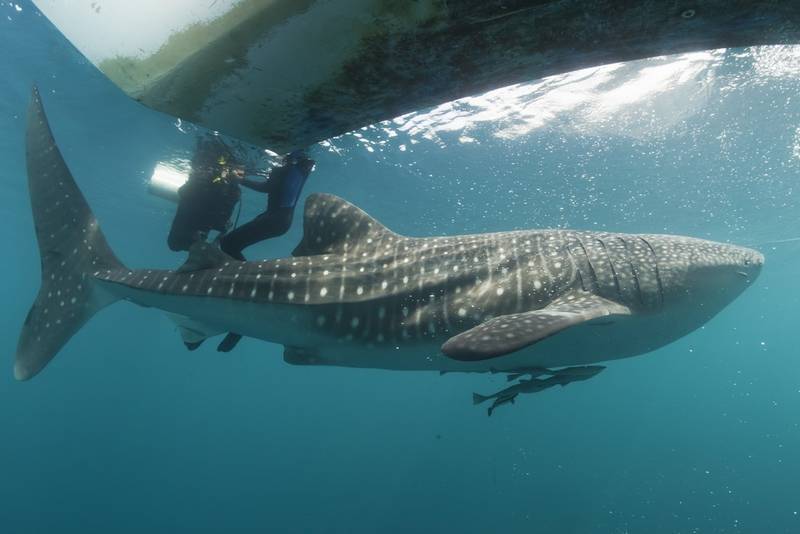
Ninglaoo is the second largest reef in Australia and contains an amazing diversity of marine life including dolphins, manta rays, dugongs and humpback whales. Whale sharks visit from March to June. andrea-izzotti/shutterstock
Ningaloo Beach, situated along the remote northwest coast of Western Australia, is a pristine and untouched paradise celebrated for its extraordinary biodiversity and stunning coral reefs. Renowned as one of the few places on Earth where visitors can easily swim with whale sharks, Ningaloo Reef offers unparalleled marine encounters right off its shores. The reef’s vibrant coral formations provide a haven for an array of marine life, including tropical fish, manta rays, turtles, and humpback whales during their migration season. Ningaloo’s crystal-clear waters and pristine beaches, such as Turquoise Bay and Coral Bay, invite snorkelers and divers to explore the kaleidoscopic underwater world.
Nambung National Park, Western Australia

The Pinnacles limestone rock formation. nokuro/shutterstock
Nambung National Park, located in Western Australia, is an enchanting natural wonderland known for its extraordinary Pinnacles Desert. Spread across vast stretches of ancient yellow sand dunes, this unique landscape is adorned with thousands of limestone pillars rising mysteriously from the earth, creating a surreal and mesmerizing scene. These otherworldly formations, some reaching several meters in height, captivate visitors who stroll through the park, marveling at the sheer diversity of shapes and sizes.
Kakadu National Park, Northern Territory
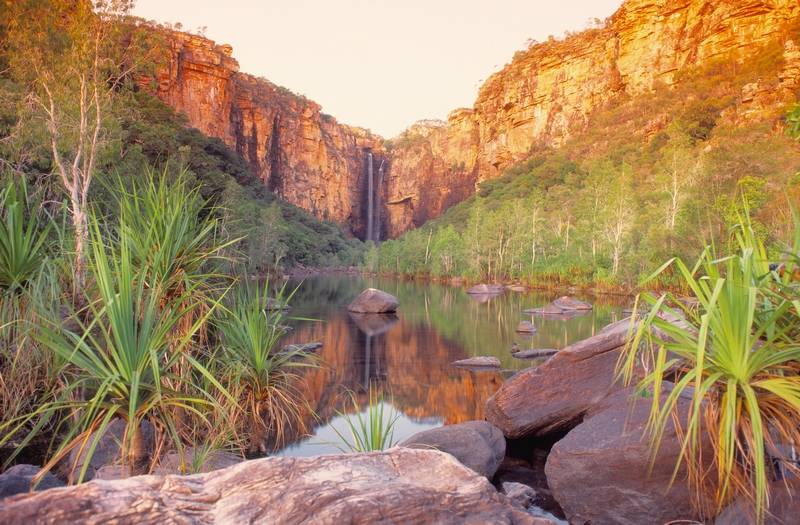 Jim Jim Falls in Kakadu National Park. janelle-lugge/shutterstock |
Kakadu National Park, a UNESCO World Heritage Site, is an ancient and awe-inspiring expanse nestled in the tropical north of Australia’s Northern Territory. Encompassing over 20,000 square kilometers of diverse landscapes, this cultural and ecological treasure trove boasts towering sandstone escarpments, lush wetlands, cascading waterfalls, and expansive floodplains teeming with wildlife. Kakadu is steeped in Indigenous culture, with rock art sites showcasing ancient stories and traditions that have been passed down for millennia. Visitors to Kakadu can explore its rich biodiversity, spot crocodiles and myriad bird species in its wetlands, take scenic boat cruises along its rivers, and marvel at the dramatic landscapes.
Freycinet National Park, Tasmania
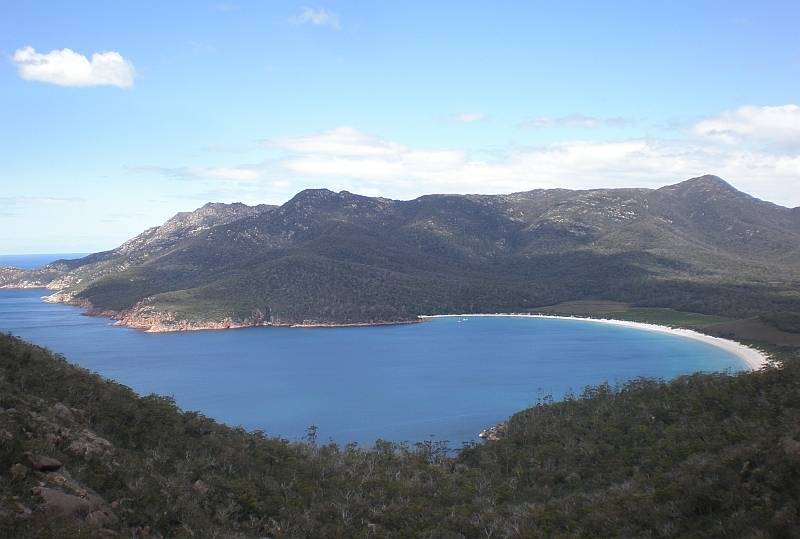
Wineglass bay in Freycinet National Park, voted by travel authorities as one of the ten best beaches in the world.
Freycinet National Park, nestled along Tasmania’s stunning East Coast, is a picturesque sanctuary renowned for its pristine beaches, granite peaks, and crystal-clear waters. The park’s centerpiece, Wineglass Bay, captivates visitors with its crescent-shaped shoreline, framed by granite peaks and turquoise waters that offer an idyllic setting for hiking, swimming, and kayaking. Freycinet boasts a diverse array of landscapes, from the rugged Hazards mountain range to the tranquil shores of secluded bays like Honeymoon Bay and Sleepy Bay.
Cradle Mountain, Tasmania
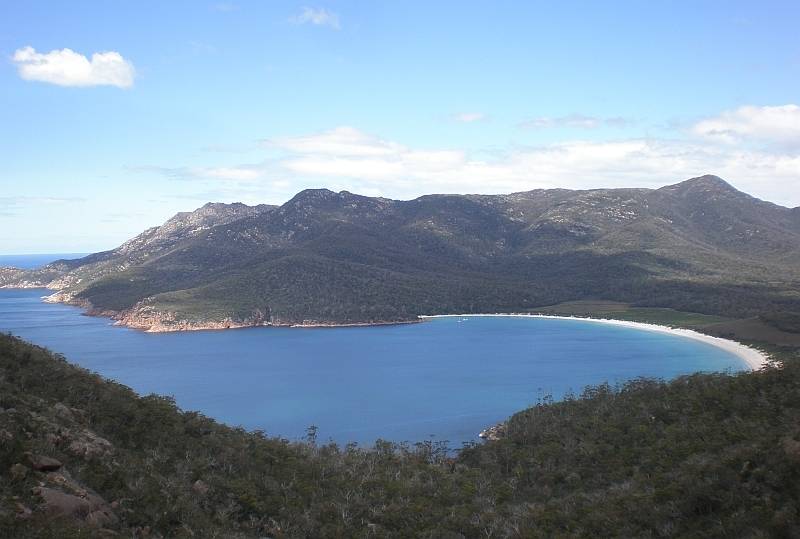
Dove Lake in Cradle Mountain, the starting point for Australia’s most famous bush walk, the 82 km Overland Trek. jacqui-martin/shutterstock
Cradle Mountain, situated within the World Heritage-listed Cradle Mountain-Lake St Clair National Park in Tasmania, stands as an iconic natural landmark renowned for its rugged beauty and pristine wilderness. The mountain’s jagged peaks, glacial valleys, and ancient rainforests offer a haven for outdoor enthusiasts and hikers eager to explore its diverse landscapes. The Overland Track, a world-renowned trek spanning around 65 kilometers, commences at Cradle Mountain and traverses through a mesmerizing alpine terrain, showcasing diverse ecosystems, ancient forests, glacial lakes, and panoramic vistas.



